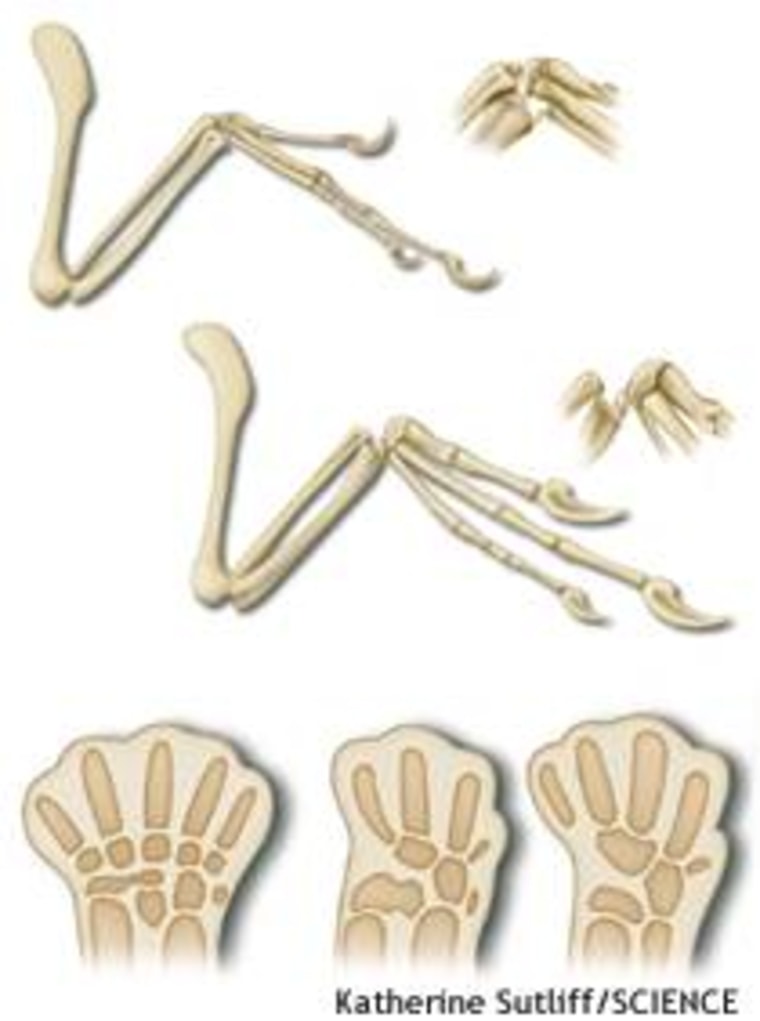A new research study points to the “fingers” of past and present species to argue against the now-prevailing theory that birds are the direct descendants of dinosaurs.
The relationship between ancient dinosaurs and modern birds has been debated for 25 years — and the new research, published in Friday’s issue of the journal Science, is likely to intensify that debate.
Previous studies tipped the scales toward the theory that birds descended from dinosaurs known as theropods — a class that includes such prehistoric carnivores as Tyrannosaurus rex. Among the leading proponents of the theory is paleontologist John Ostrom of the Yale Peabody Museum.
In May, Argentine paleontologist Fernando Novas argued that “birds are living dinosaurs,” citing the structure of a 90-million-year-old dinosaur called Unenlagia comahuensis in support of his claims.
But the newly published study, written by biologists Ann Burke and Alan Feduccia of the University of North Carolina at Chapel Hill, says a comparison of digits from fossilized dinosaur and bird bones doesn’t bear out the theory. A detailed examination of bird embryos - and even embryos of other species — weakens the bird-dinosaur link, they say.
Feduccia said Thursday that the wings of early birds such as Archaeopteryx had three bony digits, as did the forelimbs of theropods.
But he contended that while the dinosaurian digits correspond to the thumb, index and middle fingers of humans (1-2-3), those of early and present-day birds are analogous to the index, middle and ring fingers (2-3-4). Burke and Feduccia saw the 2-3-4 arrangement in bird embryos as well as the embryos of alligators and turtles.
“The obvious question becomes how you can derive a bird hand with digits 2-3-4 from a dinosaur hand with digits 1-2-3,” he said. “The answer is quite obvious: You cannot.”
Feduccia admits that he has been a longtime skeptic of the direct-dinosaur-descent theory, calling it a “biblical version of the origin of birds.” And he points to other arguments against a direct connection:
Archaeopteryx arose 150 million years ago, while the birdlike dinosaurs some consider to be a missing link to modern birds came along 30 million to 80 million later. Feduccia argues that the similarities between early birds and birdlike dinosaurs are due to “convergent evolution” - the idea that advantageous physical traits can develop independently in divergent species.
There are some marked differences in the bones of dinosaurs and birds: Dinosaurs had serrated teeth, while birds have peg-like teeth. Bird feet have reversed toes used for perching in branches - something dinosaurs never developed. Dinosaurs had a characteristic joint in their lower jaws for grasping prey - something never found in birds.
Proponents of the dinosaur-bird link contend that a relatively large creature developed the ability to fly “from the ground up.” But Feduccia says that idea goes against the evolutionary grain. Rather, he says, flight evolved among small-sized creatures that made their home in high places such as treetops.
Feduccia doesn’t mince words, calling the idea that birds developed directly from dinosaurs a “delusional fantasy by which one can vicariously study dinosaurs at the backyard bird feeder.”
In a commentary accompanying the Science article, University of Wales biologist Richard Hinchliffe is a bit less confrontational. But he does say the new research now stands as “the most important barrier to belief in the dinosaur-origin orthodoxy.”
Even though he argues forcefully against a direct link, Feduccia acknowledges that “this argument may have been blown out of proportion.”
Experts in the field agree that birds and dinosaurs developed from the same class of prehistoric creatures, he said.
“The only question we are arguing about is whether they derived very late in time from a specific group of theropod dinosaurs, the so-called raptors, or are they derived from a common-stem ancestor with dinosaurs? That’s the view that would be bolstered by this paper,” he said.
